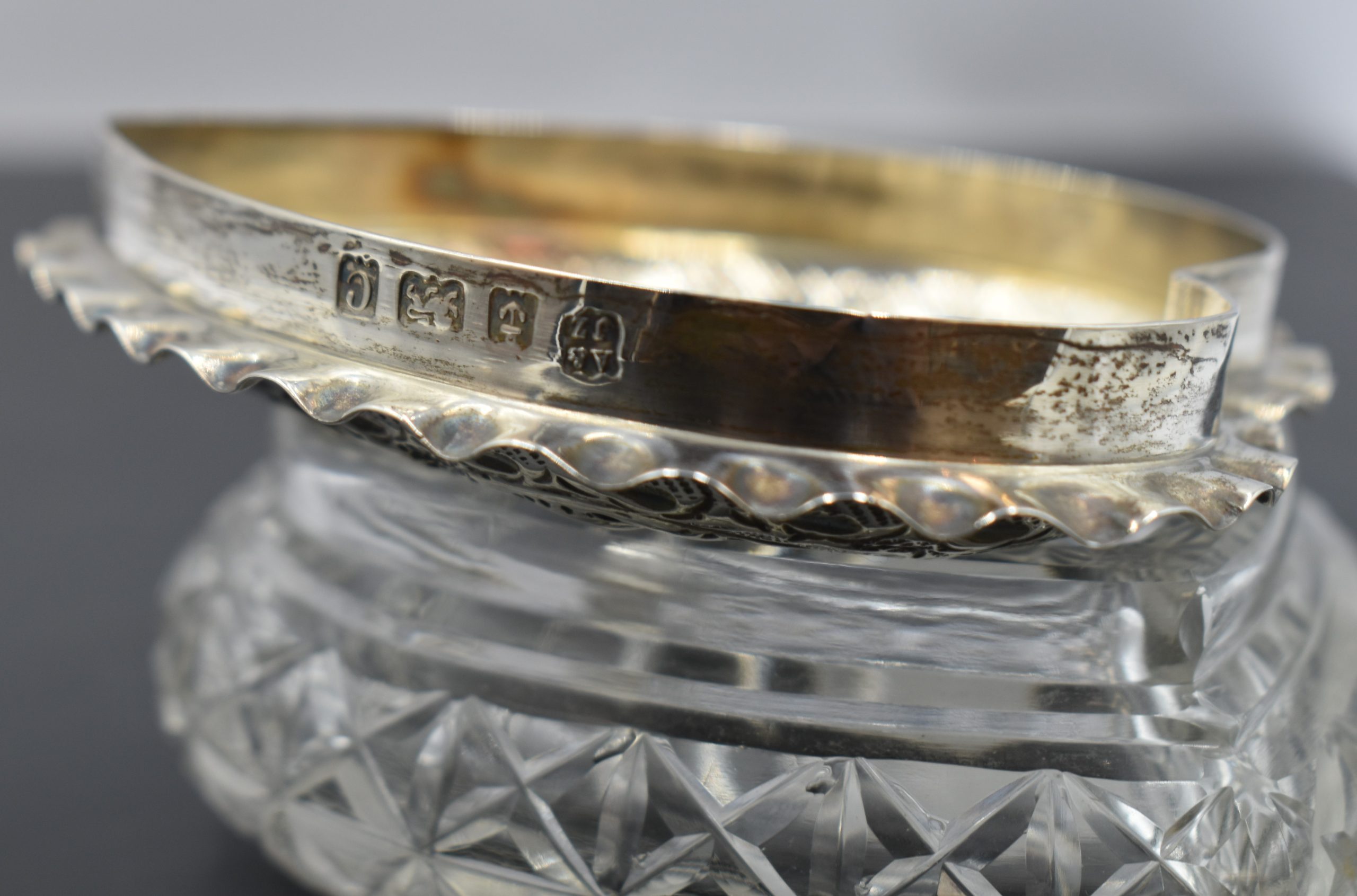Not sure what to look out for when it comes to identifying sterling silver pieces? Specialist Valuer for Antique and Vintage Silver and Silver Plate, Rowan Hughes, shares some of her knowledge in this latest article.
“When it comes to precious metals, people often think of purity and origins. This is displayed through the use of hallmarks, the modern-day marks entailing the purity of the metal, a date letter for the year it was made, a maker’s mark, and the Assay Office where it was marked. However, this practice originated around 2500 BCE in Ancient civilisations such as Ancient Greece and Babylonia. These civilisations similarly used stamped symbols to show the purity, origins, and quality of silver. In England, Henry III was the first to attempt to regulate the standards of precious metal wear, including the standards of fineness, followed by Edward I, who passed a statute to try and ensure silver was 92.5% pure or sterling. The aim of this was to prevent fraud by having the pieces stamped with a leopard’s head to show they met the required standards. Later in the 18th century, when taxes were implemented on silver-plated items, makers often attempted to avoid having their work hallmarked. Fraud and counterfeiting were taken very seriously, evident in the moves to regulate precious metals, but most seriously, in the mid-18th century, counterfeiting hallmarks became punishable by death. Additionally, it was Edward III who implemented the requirement of a maker’s mark so the pieces could be traced back to who made the items.
“Prior to 1773, there were only Assay Offices in London, Chester, and Exeter, the latter two having closed in 1962 and 1883, respectively. Offices were then established at Birmingham and Sheffield because of the large volume of silver items being created in these areas. It was due to the representatives of the manufacturers in the cities meeting at the Crown and Anchor Hotel in London that Sheffield took the crown as their mark, while Birmingham took the anchor. Further to this, Offices have been established in Newcastle and York, along with others in Scotland and Ireland.
“In the late 17th century, there was a large demand for silver-plated items, which resulted in the fineness of silver plate being raised to 95.84% rather than 92.5%. This was mostly to help certain items, namely coins, to avoid being melted down for plate. To distinguish this, a mark of a seated Britannia was used instead of the traditional marks. However, the initial sterling standard of silver was quickly reestablished in the early 18th century along with the previous marks. Silver-plated items often have E.P.N.S stamped, standing for Electroplated Nickel Silver, where nickel silver, which does not in itself contain silver, is plated in a layer of precious metal. Pieces can also have stamps that resemble the traditional sterling silver marks. There are various resources online and in print that help distinguish between them; some are more obvious than others. Some pieces can also be marked with 800. (80%), or 835. (83.5%), which refers to different grades of purity. Such pieces are referred to as silver but also white metal, due to the standard of silver being 925 (92.5%).
“Along with the typical hallmarks, commemorative hallmarks are also used. The first being in 1934-1935 to commemorate the Silver Jubilee of King George V and Queen Mary. These were followed by the coronation of Queen Elizabeth II and her later jubilees, along with the 2000 Millennium.
“In 1973, all the previous statutes regarding hallmarks were repealed and consolidated into a single Act, the Hallmarking Act. The UK government’s overview of the Act states, ‘All items (over certain weights) sold in the UK and described as being made from gold, silver, platinum or palladium must have a legally recognised hallmark’… ‘The purpose of hallmarking is to protect buyers of precious metal items against fraud. The hallmark is a mark which shows that the item has been independently tested and verified as matching its description, and conforming to all legal standards of purity or fineness of the metal.’
“When looking at your own silver pieces, it is important to remember the key marks you are looking for. A date letter, a maker’s mark, and an Assay Office mark; these are what will allow you to identify if the piece is sterling silver.”

